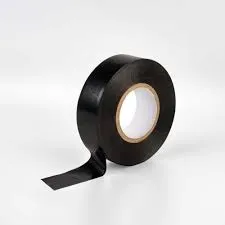Understanding Different Types of Insulation Tape
Insulation tape is an essential tool in electrical work, home repairs, and even crafting. It offers a reliable means of insulating electrical wires and connections, preventing short circuits and enhancing safety in various applications. With various types of insulation tape available on the market, it's crucial to understand their unique properties and uses to make an informed choice.
1. PVC Insulation Tape
One of the most common types of insulation tape is PVC (polyvinyl chloride) tape, often recognized for its versatility and durability. PVC insulation tape is flexible, offering good resistance to moisture, chemicals, and UV light. This tape usually comes in various colors, making it ideal for color-coding wires during installations. It's typically used in both indoor and outdoor electrical applications, ensuring a secure and lasting insulation solution.
2. Mastic Insulation Tape
Mastic tape is a highly adhesive, rubber-based tape designed for electrical insulation. Its unique properties allow it to conform well to uneven surfaces, making it ideal for irregular shapes and objects. Mastic insulation tape is also noted for its weather resistance, which is why it’s often used in outdoor applications. It can provide excellent insulation and protection against moisture and other environmental factors, ensuring that electrical connections remain safe and secure.
3. Glass Cloth Insulation Tape
Glass cloth insulation tape is designed for high-temperature applications, making it suitable for environments where traditional PVC tape would fail due to heat. This type of tape consists of woven glass fibers coated with silicone or epoxy, providing exceptional heat resistance and electrical insulation. It’s commonly used in high-voltage applications, electric motors, transformers, and other settings where thermal stability is critical.
insulation tape types

4. Self-Fusing Silicone Tape
Another innovative type of insulation tape is self-fusing silicone tape. This unique tape bonds to itself when stretched and wrapped around objects, creating a watertight seal that is both flexible and resistant to a wide range of temperatures. Self-fusing silicone tape is particularly beneficial for emergency repairs, as it can be applied in wet conditions and does not leave any sticky residue when removed. Its strong insulation properties make it suitable for electrical applications as well as plumbing repairs.
5. Rubber Insulation Tape
Rubber insulation tape, often used for wire splicing and repairs, offers excellent dielectric strength and flexibility. This tape can withstand high temperatures and is also resistant to moisture and UV exposure. Rubber insulation tape is typically employed in electrical connections that require a robust and long-lasting seal, making it ideal for outdoor and industrial applications.
Choosing the Right Insulation Tape
When selecting insulation tape, consider the specific requirements of your project. Assess factors such as temperature range, environmental exposure, and the type of material it will insulate. Additionally, think about the tape's application method and whether it needs to withstand extreme conditions, such as moisture or physical stress.
In conclusion, understanding the different types of insulation tape can greatly enhance the safety and effectiveness of your electrical work or repairs. By choosing the right tape for the job, you'll ensure a durable, reliable insulation solution that meets your needs. Whether you're tackling a DIY project at home or engaging in professional electrical work, selecting the appropriate insulation tape is a crucial step toward achieving safe and effective results.
-
XIANGFAN Rubber Tape-Ultimate Solutions for All Your Insulation NeedsNewsJun.24,2025
-
XIANGFAN Rubber Tape-Protection for Industrial and Residential ApplicationsNewsJun.24,2025
-
XIANGFAN Rubber Tape: Superior Safety and Sealing for Demanding EnvironmentsNewsJun.24,2025
-
XIANGFAN Rubber Tape: Reliable Solutions for Every Electrical ChallengeNewsJun.24,2025
-
XIANGFAN Electrical & Industrial Tape: Powering Reliability Across IndustriesNewsJun.24,2025
-
XIANGFAN Electrical & Industrial Tape: Excellence in Every ApplicationNewsJun.24,2025
